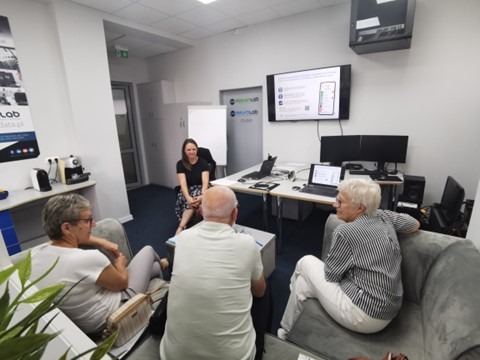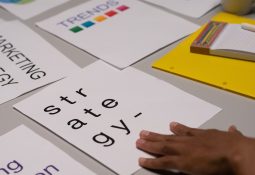Eye-tracking research is a scientific method used to study and analyze eye movements and gaze patterns of individuals. It involves using specialized eye-tracking technology, such as eye-tracking glasses or monitors, to precisely measure and record where a person is looking, the duration of their gaze, and the sequence of their eye movements.

Eye-tracking research provides valuable insights into visual attention, perception, and cognitive processes. It helps researchers understand how individuals interact with visual stimuli, such as images, videos, websites, advertisements, and user interfaces. By examining eye movement patterns, researchers can uncover underlying cognitive processes, preferences, and behaviors.
The process of conducting eye-tracking research typically involves the following steps:
- Participant Preparation: Participants wear eye-tracking glasses or sit in front of an eye-tracking monitor, ensuring that the eye-tracking technology is accurately calibrated for their eye movements.
- Experimental Task: Participants engage in a specific task, such as viewing images, watching videos, or interacting with a digital interface. The task can be designed to test user experience, visual attention, information processing, or other relevant research objectives.
- Data Collection: The eye-tracking technology records the participant’s eye movements, capturing data on where they are looking, the fixation duration (time spent looking at a specific point), saccades (rapid eye movements between fixations), and other eye-related parameters.
- Data Analysis: The recorded eye-tracking data is analyzed using specialized software and algorithms. Researchers examine gaze patterns, areas of interest, and visual attention metrics to draw meaningful conclusions and insights from the data.
- Interpretation and Findings: Researchers interpret the eye-tracking data and draw conclusions based on the patterns and trends observed. These findings can inform user experience design, marketing strategies, interface improvements, and various other applications based on the research objectives.
Results of eye-tracking research on the Easierphone App
As part of the biometric study, information regarding the visual activity of the participants on the Easierphone website (https://easierphone.com/pl/) was collected. The study employed the eye-tracking method, which allowed for obtaining information about the actions performed by the respondents on the website. Heatmaps and fixation paths were used to examine areas of the highest and lowest activity among the participants. By using fixation paths, it was determined how the participants’ gaze followed step by step, and which areas of the website attracted their attention the most. Heatmaps also helped determine the intensity with which participants looked at specific elements of the website. The study allowed for recognizing users’ preferences, needs, and expectations regarding the tool.

For each of the analyzed elements, the following were taken into account:
- Heatmaps – presenting the areas that captured the participants’ gaze most strongly.
- Fixation maps – presenting the gaze path of the participants.
To complement the biometric research, a discussion workshop was also conducted where participants exchanged opinions, potential changes, and suggestions aimed at improving the Easierphone application website.
The research group consisted of 6 individuals aged 18 and above. It was diverse in terms of gender and age (four females and two males). It was divided accordingly based on age in order to present the study results (older and younger individuals).
The results of the research revealed very interesting conclusions, especially regarding the common perception of older vs. younger generations’ behavior:

These findings unexpectedly underscore the differing preferences and tendencies of the two generations when interacting with pictorial elements, with younger individuals being more textually engaged and older individuals gravitating towards visual representations. It might be shocking as the common knowledge confirms that younger generations preferring pictures over text have indicated a strong inclination towards visual content consumption. Studies have shown that younger individuals, often referred to as digital natives, have grown up in a media-rich environment and are accustomed to processing information quickly through images, videos, and graphics.
This preference for visual content is attributed to its ability to convey complex information rapidly and engage emotions effectively. Social media platforms, image-focused websites, and multimedia applications have become integral parts of their communication and information-gathering habits. As a result, marketers, educators, and content creators are increasingly tailoring their strategies to include visually appealing elements to capture the attention and interest of this demographic. Having results of eye-tracking research on the Easierphone App we need to reconsider the content of webpages (not only the Easierphone one) regarding chosen target groups.






